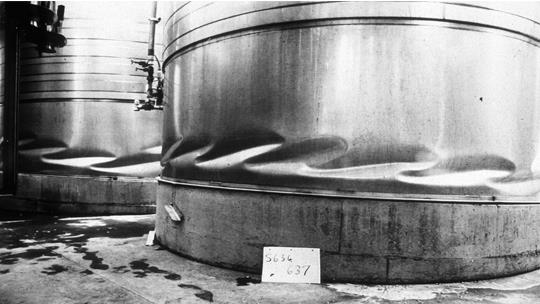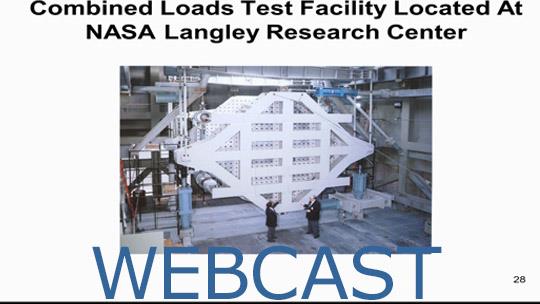Buckling, Shells, Knockdown Factors, and Validation Testing
Discipline: Structures
NASA’s Shell Buckling Knockdown Factor Project (SBKF), was established in the spring of 2007 by the NASA Engineering and Safety Center (NESC) in collaboration with NASA’s Constellation Program and Exploration Systems Mission Directorate. The SBKF project has the goal of developing improved (i.e., less-conservative, robust), shell buckling design factors (a.k.a. knockdown factors) and design and analysis technologies for launch vehicle (LV) structures. Preliminary design studies indicate that implementation of these new knockdown factors can enable significant reductions in mass and control mass-growth in these vehicles and can help mitigate some of the typical LV development and performance risks. In particular, the new design technologies are expected to reduce the reliance on testing, provide high-fidelity estimates of structural performance, reliability, robustness, and enable increased payload capability.
The lecture will provide a brief summary of SBKF objectives and approach towards developing and validating these new technologies and provide a look towards the future of design, analysis and testing of the next generation of buckling-critical launch vehicle structures. In particular, a historical review of the current design recommendations for buckling-critical thin-walled cylindrical shell structures will be presented, and their limitations relative to the design of modern launch vehicle structures will be discussed. Next, the lecture will identify some key technologies that are enabling the development of updated design factors including advancements in computational tools for structural analysis, testing and measurement technologies, and manufacturing and materials, and suggest other areas of R&D investment. Finally, results from a recent (and exciting!) full-scale structural test of a 27.5-ft-diameter orthogrid-stiffened Space Shuttle External Tank barrel section, ETTA1, will be presented.

